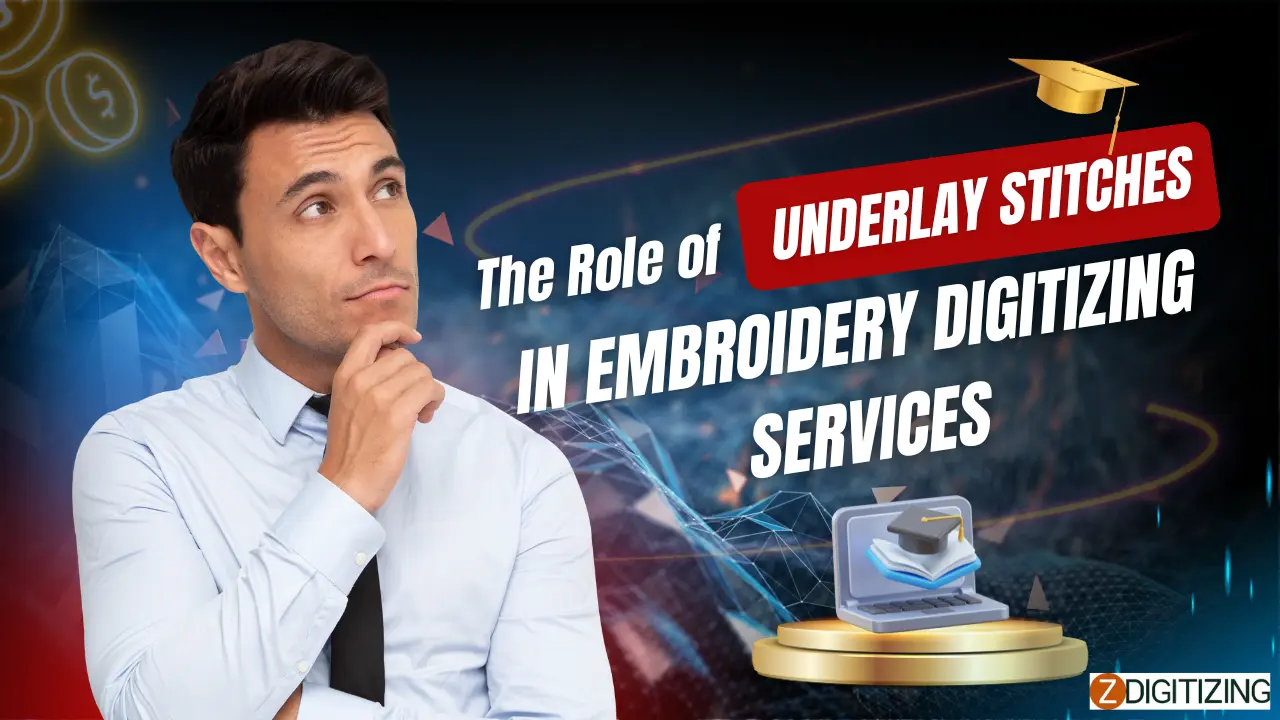Embroidery digitizing is a complex process that requires precision and technical expertise to achieve high-quality results. Among the various elements of digitizing, underlay stitches play a crucial role in ensuring embroidery designs are stable, smooth, and visually appealing. In this blog, we will explore what underlay stitches are, their types, benefits, and their significance in embroidery digitizing services.
What Are Underlay Stitches?
Underlay stitches are the foundation stitches that are applied before the top embroidery stitches. They help to stabilize the fabric, minimize distortions, and create a smooth surface for embroidery. Without proper underlay stitches, embroidery can appear uneven, puckered, or distorted.
Why Are Underlay Stitches Important?
1. Provides Stability to Fabric
Underlay stitches help prevent fabric from shifting during the embroidery process, especially on stretchy or lightweight fabrics.
2. Enhances Embroidery Quality
They create a solid base, allowing top stitches to sit evenly, ensuring a polished and professional finish.
3. Reduces Puckering and Distortion
By securing the fabric in place, underlay stitches prevent wrinkles and distortions in the final embroidery.
4. Improves Thread Coverage
Underlay stitches add an extra layer of thread, ensuring better coverage and a denser embroidery appearance.
5. Strengthens the Embroidery
Embroidery with well-placed underlay stitches is more durable and resistant to wear and tear.
Types of Underlay Stitches
1. Center Walk Underlay
This stitch runs down the center of narrow columns or small text, providing light stabilization without excessive thread buildup.
2. Edge Walk Underlay
Also known as a perimeter underlay, this stitch runs along the edges of a design, reinforcing its shape and structure.
3. Zig-Zag Underlay
A loose zig-zag stitch that provides increased coverage, ideal for satin stitches and thicker fabrics.
4. Tatami Underlay
Also called a fill underlay, it consists of a series of parallel stitches and is commonly used for large filled areas to add stability.
5. Double Zig-Zag Underlay
An enhanced version of the zig-zag underlay, offering maximum support for heavy fabric or 3D puff embroidery.
How to Choose the Right Underlay Stitch
1. Consider the Fabric Type
- Stretchy fabrics (e.g., T-shirts) require more stabilization.
- Thick fabrics (e.g., denim) need minimal underlay.
2. Match the Underlay to Stitch Type
- Satin stitches benefit from zig-zag underlay.
- Fill stitches pair well with tatami underlay.
3. Factor in Design Complexity
- Small lettering requires center walk underlay.
- Large, dense areas need fill or tatami underlay.
4. Balance Density for Efficiency
Using excessive underlay can increase stitch count and production time, so it’s crucial to strike the right balance.
Common Mistakes in Underlay Stitching
1. Skipping Underlay on Stretchy Fabrics
Leads to shifting, puckering, and misaligned embroidery.
2. Using Too Much Underlay
Unnecessary underlay increases production time and makes embroidery stiff.
3. Incorrect Underlay Choice
Using the wrong type of underlay for the fabric or stitch type affects the final embroidery quality.
4. Poor Stitch Direction
Underlay stitches must align with the top stitches to ensure smooth embroidery.
How Underlay Stitches Improve Embroidery Digitizing Services
1. Enhances Machine Readability
Proper underlay ensures that embroidery machines execute the design smoothly without errors.
2. Reduces Thread Breakage
A well-placed underlay minimizes tension on the thread, reducing breaks and production delays.
3. Improves Efficiency in High-Volume Production
Digitized designs with optimized underlay run more efficiently, reducing downtime and increasing productivity.
4. Increases Customer Satisfaction
Embroidery with good underlay results in higher-quality products, leading to happier clients and repeat business.
Conclusion
Underlay stitches play a fundamental role in embroidery digitizing services by providing stability, improving quality, and ensuring efficiency. Whether for commercial embroidery businesses or personal projects, mastering the use of underlay stitches can significantly enhance embroidery outcomes. Investing in professional digitizing services ensures precise underlay application, leading to high-quality, professional embroidery results every time.
FAQs About Underlay Stitches in Embroidery Digitizing
1. Can embroidery be done without underlay stitches?
While possible, skipping underlay leads to poor-quality embroidery with increased puckering and distortions.
2. How do I know which underlay stitch to use?
The choice depends on fabric type, design complexity, and the stitch type used in embroidery.
3. Does underlay stitching increase production time?
While it adds a few extra stitches, it ultimately saves time by preventing errors and rework.
4. What happens if too much underlay is used?
Excessive underlay makes the embroidery stiff, bulky, and time-consuming to produce.
5. Can underlay stitches be customized?
Yes, professional digitizers adjust underlay settings based on design requirements and fabric type.
6. Do all embroidery machines recognize underlay stitches?
Most modern embroidery machines are designed to read digitized underlay instructions effectively.
7. Is underlay needed for 3D puff embroidery?
Yes, underlay provides support and structure to raised embroidery designs.
8. How can I reduce underlay thread usage without compromising quality?
Optimizing underlay settings and choosing the right stitch type helps balance efficiency and quality.
9. What software is used to add underlay stitches in digitizing?
Popular embroidery digitizing software like Wilcom, Hatch, and Brother PE-Design include underlay customization features.
10. Does underlay affect the final look of embroidery?
Yes, proper underlay enhances the final appearance by making embroidery smoother, more defined, and more durable.







